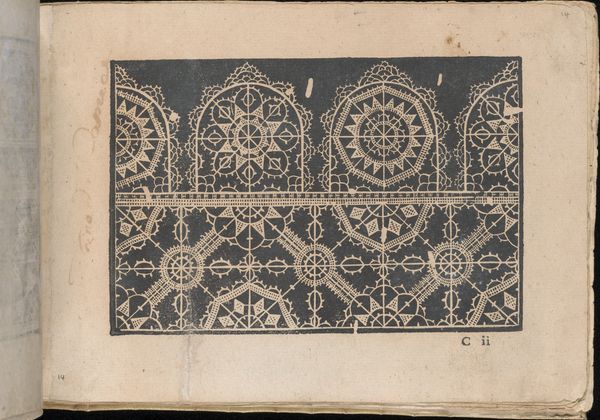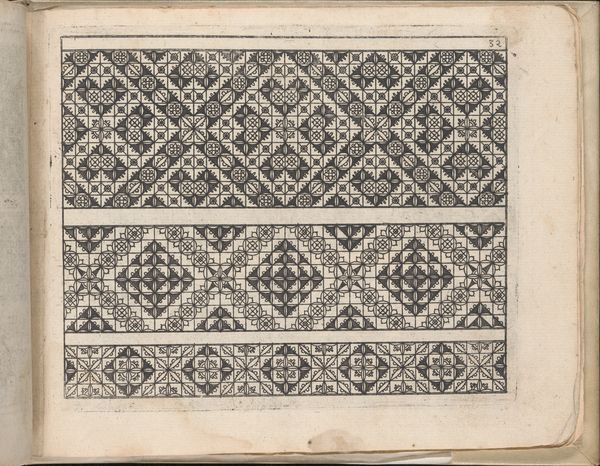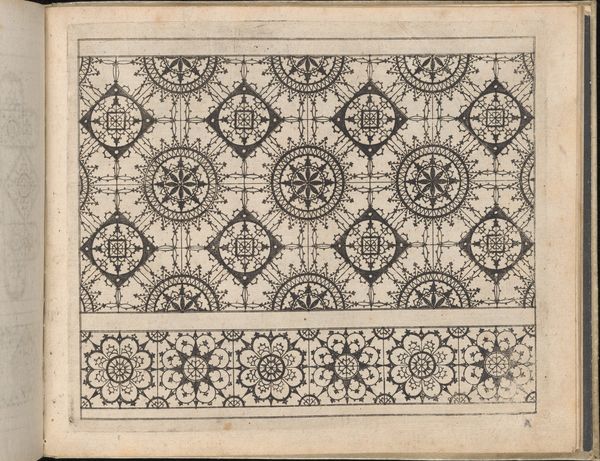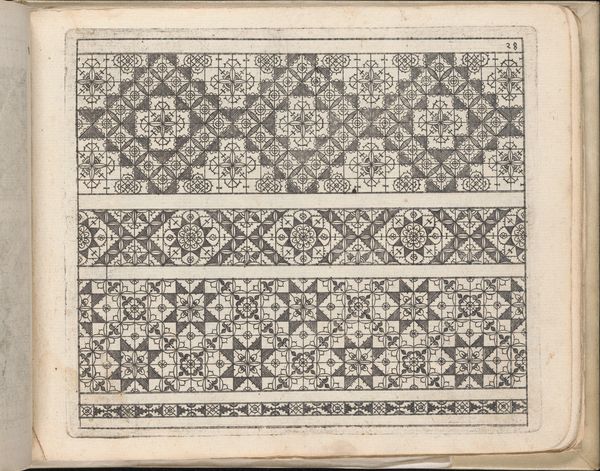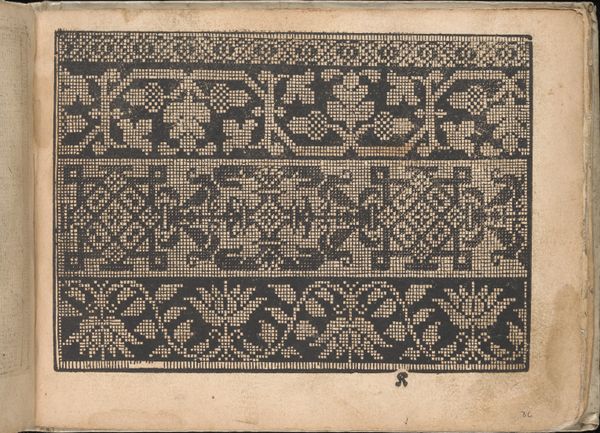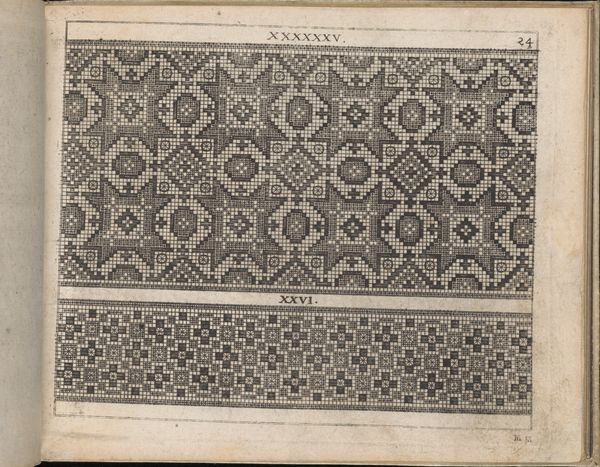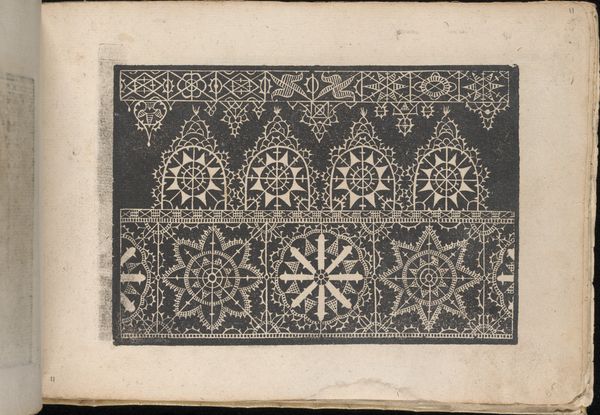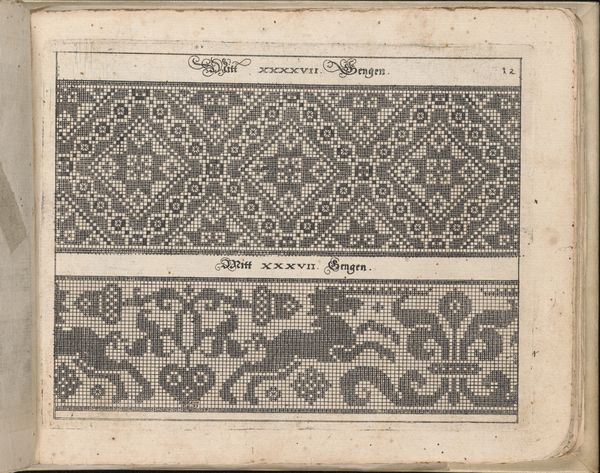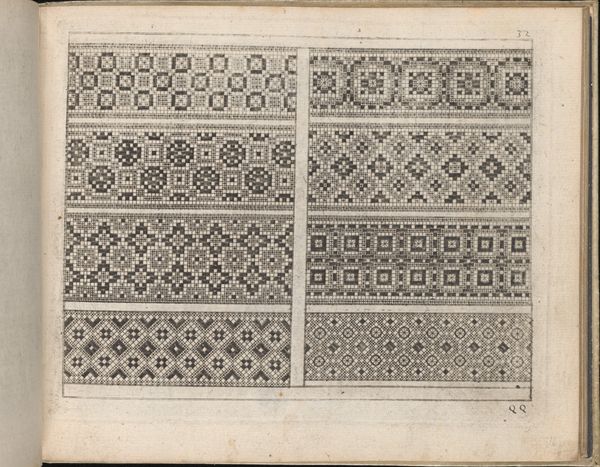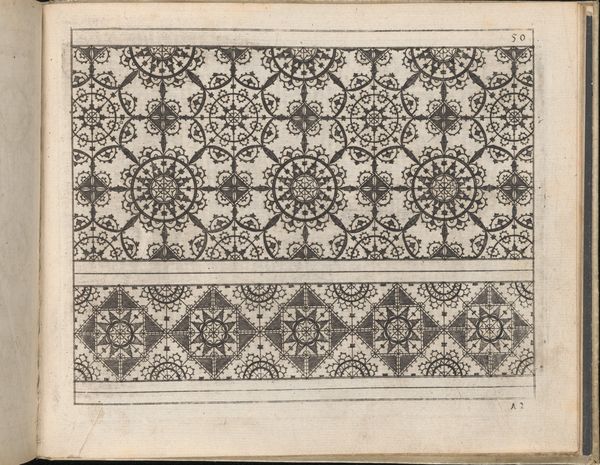
drawing, ornament, print, engraving
#
drawing
#
ornament
# print
#
11_renaissance
#
geometric
#
engraving
Dimensions: Overall: 6 11/16 x 9 1/16 in. (17 x 23 cm)
Copyright: Public Domain
Curator: This is a page, specifically page 12 recto, from "Prima parte de' fiori", printed in 1591. The creator, Giovanni Battista Ciotti, fashioned it as an engraving intended to inspire ornamental patterns. What are your initial thoughts? Editor: Immediately, I'm struck by the stark contrast—the high key white patterns against the deep black ground create a bold visual statement, and the intricate geometry is quite captivating. It feels both delicate and assertive. Curator: Indeed. Notice the deliberate arrangement into horizontal registers. The topmost band features these grid-like structures incorporating geometric forms, while the central register presents a repeated scalloped motif. Finally, the lowest register reiterates a more tightly organized interplay of circles and polygons. Editor: I'm intrigued by the notion of "fiori," or flowers, in the title. These geometric designs feel so abstract, yet I imagine the artisans adapted these patterns for lace and needlework. We're seeing not just geometric purity, but the translation of those patterns into functional and decorative objects, and likely impacting a local economy of artisans and makers. Curator: Precisely! And consider how each individual form, seemingly simple at first glance, is constructed from complex series of lines and curves. There’s a kind of visual logic that transcends pure functionality. The artist compels the eye to ceaselessly navigate the interplay of shapes, generating rhythm. Editor: So, we have the raw material in this print and then its implementation. This challenges the boundary between artist and craftsperson, author and anonymous labor—the labor needed to actualize it in material form. It begs questions about value systems as well: where does the art reside? Curator: I think it resides in both the generative idea and its tangible application. We can appreciate this piece here for its ingenious conceptual underpinnings, without undermining the role of artisans. Editor: I’m inclined to agree. It's a fruitful dialogue to have—one which invites further analysis into both structure and reception, author and makers. Curator: A worthwhile exchange. Hopefully our visitors appreciate the geometric patterns as well as the wider framework in which the prints would exist.
Comments
No comments
Be the first to comment and join the conversation on the ultimate creative platform.

